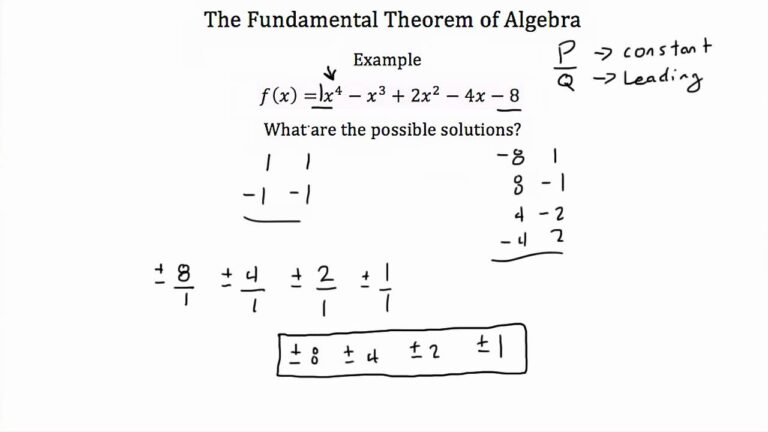The fundamental theorem of algebra any polynomial of degree n has n roots.
Note: some polynomials will have “double” or “triple” roots. Some may also have complex roots. Therefore a polynomial of degree 4 can have 4 real roots (of which 2, 3 or 4 could be the same) or 4 complex roots (of which 2, 3 or 4 could be the same) or 2 real and 2 complex roots.
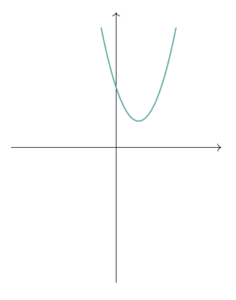
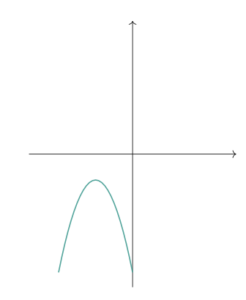
x + 1 = ±i
(x + 1)2 = −1
x2 + 2x + 2 = 0
1. Since we know one factor of f (x), we can perform polynomial division to find other roots.
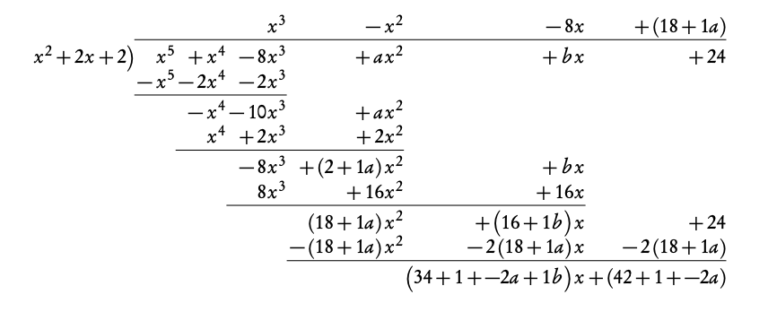
−2a − 12 = 0
a = −6
b + 16 − 2a − 36 = 0
b + 16 + 12 − 36 = 0
b = 8
x3 − x2 − 8x + (a + 18) = x3 − x2 − 8x + 12
−1 + i − 1 − i + β + α + α = −1/1
2α + β = 1
(−1 + i)(−1 − i) × β × α × α = (−1)5 × 24/1
2 × β × α × α = −24
β × α2 = −12
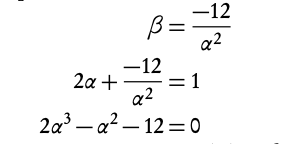
Frequently Asked Questions: The Fundamental Theorem of Algebra
What does the Fundamental Theorem of Algebra state?
The theorem states that every non-constant polynomial with complex coefficients has at least one complex root (or zero). A root is a value of the variable that makes the polynomial equal to zero.
A key consequence often stated is that a polynomial of degree n (where n ≥ 1) has exactly n complex roots, counting multiplicity.
What does "complex roots" mean?
Complex numbers include both real numbers and imaginary numbers. A complex number has the form a + bi, where a and b are real numbers, and i is the imaginary unit (where i² = -1).
So, the theorem guarantees that roots exist within the realm of complex numbers. They can be real numbers (where b=0) or non-real complex numbers (where b ≠ 0).
Why is the Fundamental Theorem of Algebra important?
It's fundamental because it guarantees the existence of roots for any polynomial. This is a powerful statement! Before this theorem, mathematicians weren't sure if roots always existed, especially for higher-degree polynomials. It ensures that a polynomial equation of degree n can always be "solved" (finding its roots) within the complex number system.
It's also crucial because it tells us *how many* roots to expect (exactly the degree of the polynomial, when counting multiplicity).
How do you "use" or "apply" the Fundamental Theorem of Algebra?
The theorem itself doesn't give you a method for *finding* the roots (except in very simple cases). Instead, it tells you what to expect:
- Existence: You know a root exists for any non-constant polynomial.
- Number of Roots: You know a polynomial of degree
nhas exactlynroots (counting multiplicity). This helps you know when you've found all of them. For example, a cubic polynomial (degree 3) will always have exactly 3 complex roots (which could be real, or a combination of real and non-real complex). - Factoring: Combined with the Factor Theorem, if
cis a root of polynomialP(x), then(x - c)is a factor. The Fundamental Theorem ensures that any polynomial can theoretically be factored into linear factors over the complex numbers.
So, you "use" it by understanding its implications when trying to find roots using other methods (like factoring, the quadratic formula, rational root theorem, synthetic division, numerical methods).
Who proved the Fundamental Theorem of Algebra?
Several mathematicians attempted to prove the theorem over centuries. Jean-le-Rond d'Alembert made an important attempt, but his proof had gaps. Carl Friedrich Gauss provided the first generally accepted rigorous proof in his doctoral dissertation in 1799. He later provided several other proofs as well.
How do you find imaginary or complex roots using this theorem?
The theorem guarantees that these roots exist, but it doesn't provide a direct calculation method. To find non-real complex roots, you typically use other techniques:
- Factoring: If you can factor out real roots using methods like the Rational Root Theorem and synthetic division, you're left with a lower-degree polynomial. If the remaining polynomial is quadratic (degree 2), you can use the quadratic formula, which will give complex roots if the discriminant (b²-4ac) is negative.
- Recognizing Patterns: Some complex roots appear in conjugate pairs. If
a + biis a root of a polynomial with *real* coefficients, thena - bimust also be a root.
The theorem assures you that if your polynomial has degree n, you'll find exactly n roots in the complex numbers, even if some are non-real or repeated.

